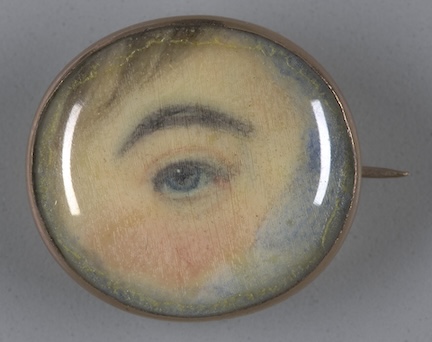Eye Miniatures – An Anonymous Token of Love
This article was previously published but I’ve never posted it on this site and thought I’d share my research into eye miniatures here.
The sentimental jewelry used during the 18th and 19th centuries is fascinating to me. These tokens of affections are sometimes very elaborate or made from unusual items, such as a loved one’s hair.
One short-lived jewelry trend that started in France sometime in the mid 1700’s and spread to London was the exchange of eye miniatures also known as lover’s eyes. It is generally believed that the Prince of Wales, who later became George IV, popularized this form of jewelry in London.
These portraits feature only an image of the eye, allowing a person to present it to a lover while keeping their identity a secret from others. They were also exchanged among family members. Lockets, containing portraits were another popular item but contained covers to hide the identity of the person. The anonymity of eye miniatures meant they could be worn openly.

The trend lasted until the 1820’s. It is estimated that less than 1000 eye miniatures exist in the world today with the Skiers of Birmingham, Ala. owning the largest collection.
For more information on eye miniatures:
Dennis Gaffney, “Gazing Into Lover’s Eyes,” http://www.pbs.org/wgbh/roadshow/tips/loverseyes.html
Candace Hern, “Lover’s Eyes Brooches,” http://candicehern.com/regencyworld/lovers-eye-brooches-origin/
Emma Mustish, “The secret history of lover’s eyes,” http://www.salon.com/2012/01/21/the_secret_history_of_lovers_eyes/
Diana Scarisbrick , “Miniatures and Silhouettes,” in Portrait Jewels (New York: Thames and Hudson, 2011).
Yale University Art Gallery, https://artgallery.yale.edu/collections/objects/16212
Do you own any jewelry that holds sentimental value?
